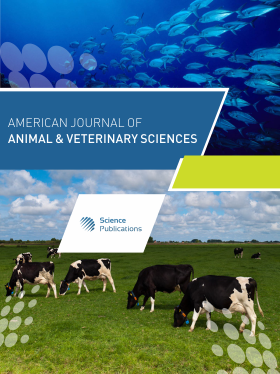Livestock Hydatid Disease (Cystic Hydatidosis) in Libya: A Review
- 1 University of Zawia, Libya
- 2 Azzytuna University, Libya
Abstract
Cystic hydatid disease is an infection caused by the larval stage of a cestode parasite called Echinococcus granulosus. Hydatid cysts are one of the major parasitic infections in Libya that causes many health problems to human and responsible for economic losses because of the condemnation of the slaughtered animals infected viscera as well as reducing the quality and quantity of the livestock other productions such as milk, wool and meat. Many abattoir investigations in Libya have revealed that, cystic hydatidosis is a disease which infect a wide range of animal species with variable rates of infection, for example, sheep (1.6 to 40%), goats (5.6 to 70%), cattle (2.7 to 56%) and camels (2.7 to 48%). Based on the available abattoirs data, cystic echinococcosis in livestock can be classified as hyper endemic in the country as the infection rate in all animal species reached almost 50% or over which fulfill the WHO criteria. Because of the absence of accurate and updated government records in all abattoirs, it is difficult to estimate the exact economic losses due to cystic hydatidosis in livestock. Diagnosis of the parasite larval stage (hydatid disease) in the living intermediate hosts (ante mortem) is basically by using imaging and serological methods, while after slaughtering the animals (post mortem), the examination of hydatid cysts can be by inspection of several expected infected organs mainly liver and lungs and to some extent other organs including spleen, kidneys, heart, brain and bones of the animal carcasses. Prevention of cystic hydatid disease primarily focusing on veterinary investigations for controlling the extent and the intensity of echinococcosis in the definitive host populations, which indirectly may lead to control the prevalence of hydatid disease in the intermediate host animals. Treatment of cystic hydatidosis in livestock is still under investigation but anti-helminthes drugs can be used. Regular treatment, taking high degree of precautions when handling pets or dealing with animal meat must be taken into consideration to minimize the level of infection and egg excretion as well as the vaccination of ruminant intermediate hosts, are all in evaluation.
DOI: https://doi.org/10.3844/ajavsp.2016.70.84

- 4,709 Views
- 6,338 Downloads
- 7 Citations
Download
Keywords
- Cystic Hydatidosis
- Dogs
- Echinococcosis
- Libya
- Livestock
- Prevalence
